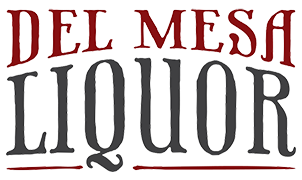Exploring the universe of wine is akin to embarking on an exhilarating sensory voyage, where each sip transports you to diverse landscapes, cultures, and traditions. At the core of this exploration is the enigmatic realm of wine aromas, the enticing scents that dance in your nose before the wine even graces your palate. But how does one traverse this intricate olfactory terrain?
This guide invites you on an aromatic adventure to unlock the mysteries of wine aromas. Before you saunter down the wine aisle of your nearest liquor store, let's lay the groundwork by comprehending what wine aromas are. Simply put, they are the fragrances of the wine, forming a vital aspect of its overall flavor profile.
Generally, wine aromas fall into three categories: primary, secondary, and tertiary, each offering a distinct spectrum of scents contributing to a wine's unique identity.
Understanding the Basics: What are Wine Aromas?
Before you step into your local liquor store and start exploring the wine aisle, it's essential to understand the basics of wine aromas. The term 'aroma' refers to the smell of the wine, which is one of the most critical components of its overall flavor profile. Wine aromas are typically classified into primary, secondary, and tertiary.
- Primary Aromas: Primary aromas come from the grapes themselves. They are heavily influenced by the grape variety, the vineyard's environment, and the climate (collectively known as the 'terroir'). Familiar primary aromas can include a range of scents, from fruits and flowers to herbs and spices.
- Secondary Aromas: Secondary aromas arise from the winemaking process, particularly fermentation. They can vary significantly depending on the fermentation methods used, with typical secondary aromas including yeast-derived scents like bread, cheese rind, or beer.
- Tertiary Aromas: Tertiary aromas develop as the wine ages, either in bottles or barrels. They are more complex and nuanced, often including scents like vanilla, smoke, cedar, leather, or even chocolate.
The Art of Sniffing: How to Identify Wine Aromas

Image: iStock
The next time you are at a liquor store selecting a bottle of wine, remember that appreciating wine is not just about tasting. It's also about smelling. Learning to identify different aromas can enhance your wine-drinking experience and deepen your understanding of this elegant beverage. Here are some tips to get you started:
- The Right Glassware: The shape and size of your wine glass can significantly impact how you perceive the wine's aroma. Glasses with a broader base and narrower top are ideal for capturing and concentrating the wine's aromas, enabling you to appreciate them fully.
- Swirl, Then Sniff: Swirling your wine serves a purpose beyond just looking sophisticated - it allows oxygen into the wine, which helps to release its aromas. After gently swirling your wine, put your nose into the glass and take a deep breath. Try to identify the different scents that hit your nose.
- Use a Wine Aroma Wheel: A wine aroma wheel can be an invaluable tool for beginners. It provides a comprehensive list of the most common wine aromas, categorized by their type. While you sniff, an aroma wheel can help guide your senses and train your nose.
Deep Dive into Decoding Aromas
Unraveling the mystery of wine aromas can be as intriguing as understanding a beautiful piece of music or art. Here are some typical wine aromas associated with different wine types:
1. White Wines
Famous white wines like Chardonnay or Sauvignon Blanc often exhibit primary citrus, apple, pear, or tropical fruit aromas. Secondary aromas can include butter, cream, or yeast, especially if the wine has undergone malolactic fermentation. Tertiary aromas from aging might involve scents like vanilla, almond, or toast.
2. Red Wines
Red wines like Cabernet Sauvignon or Pinot Noir often feature primary aromas of red fruits like cherry, raspberry, or plum. They can also exhibit secondary clove, pepper, or chocolate aromas, mainly if fermented with specific yeast strains. Red wines can develop tertiary aromas like leather, smoke, or tobacco as they age.
Enhance Your Wine Experience

Image: iStock
Now that you have the basic knowledge about wine aromas, it's time to put it into practice. Head to a liquor store near you and explore the extensive range of wines. Armed with your newfound understanding, you will be able to select wines that taste good and tickle your nose with their enchanting aromas.
Conclusion: The Journey Continues
Decoding wine aromas is a continuous journey of learning and discovery. It can transform your wine drinking from mere consumption into a whole sensory experience. So, the next time you visit a liquor store, remember to take a moment to appreciate the beautiful bouquet of aromas your chosen bottle has to offer. After all, understanding and appreciating wine aromas is a significant step in your journey towards becoming a true wine connoisseur.
 Log in
Log in
 My Wishlist
My Wishlist Reward Program
Reward Program Corporate Gifts
Corporate Gifts Customer Help
Customer Help


